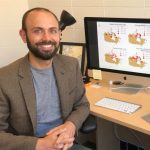July 5, 2018
The results of the 2018 XSeed program were recently announced. Three of the eight projects approved involve UTTRI associated faculty (see details below).
“XSeed: Expanding Our Research Impact Through Inter-Disciplinary Collaboration” project funding seeks to attract new researchers that have not previously partnered.
Prioritizing airport infrastructure upgrades to improve social sustainability and well-being in remote Northern Ontario communities
Professor Shoshanna Saxe; Professor Tracey Galloway; Professor Michael Widener
Departments: Civil & Mineral Engineering; Anthropology, UTM; Geography & Planning Research



Executive Summary
Limited access to essential services is a principle driver of inequality for Canada’s Indigenous people. In remote northern communities, service delivery is dependent on reliable air transportation. Northern airports are essential conduits for Medevac and air ambulance flights, forest firefighting and aerial policing. Air cargo services bring food, fuel, building supplies and potable water. The impact of climate change on ice roads threatens to increase the number of communities reliant on air service.1 Canada’s northern airports are aging facilities managed by provincial and territorial governments. Long lists of planned upgrades are contingent on short construction seasons, severe weather, poor access and limited funds.
The proposed pilot study examines impact (reliability, frequency, cost) on essential services (food, health, justice) of conditions at 29 provincially-managed northern Ontario airports. Using a mixed- methods approach we will assess the impact of existing infrastructure on the reliability of passenger and cargo services and explore the range of outcomes for food, health, justice and education service delivery in communities. Data will be provided by airport administrators, commercial air operators, service providers and community members through our extensive network of partnerships with government and First Nations leaders. The analysis will provide an empirical foundation for a larger project that measures the impact of air infrastructure needs on essential service delivery in remote northern communities. Findings will inform policy decisions surrounding improvements to transportation infrastructure in Canada’s northern regions.
Transportation justice in the era of automated technologies and integrated mobility systems
Professor Amer Shalaby; Professor Steven Farber
Departments: Civil & Mineral Engineering; Human Geography, UTSC Research


Executive Summary
Transportation planning, and especially public transit operations planning, is notoriously focused on driving progress through increasing network efficiencies. In many respects, this drive for technical and economic efficiency has come at the detriment of the overarching society-driven goals of a public transportation system – that is, enabling widespread and equitable participation by all members of society in the activities of daily life.
In an era of rising socio-spatial inequalities in cities worldwide, innovations in the transportation technologies sector such as automated vehicles (AVs) and Mobility as a Service (MaaS), offer plausible solutions to producing more inclusive urban transportation systems. However, in order to plan and steer these technologies towards achieving overarching societal goals, we require innovations in the traditional transportation planning framework and related transit service performance indicators, especially those which measure and value the social equity benefits offered by transportation sector transformations.
The long-term aim of this collaboration is to develop mechanisms for achieving equity and justice in transportation planning, infrastructure development, and transit operations. This project’s near-term goal of developing new decision support tools for assessing the social equity benefits of emerging transportation technologies will be used as a proof-of-concept to lay the groundwork for a strategic sequence of grant applications culminating in the award of a $2.5M SSHRC Partnership Grant.
Quantifying the effects of public transit interventions on urban environments and public health
Professor Marianne Hatzopoulou; Professor Matthew Adams
Departments: Civil & Mineral Engineering; Geography, UTM Research Project


Executive Summary
Despite the breadth of research on built environment predictors of public health, the impacts of public transit on the urban environment are largely unknown. As Canadian provinces embark in public transit strategies primarily with the objective of reducing traffic congestion and greenhouse gas emissions (GHG), the co-benefits of transit investments remain uncharacterized. In particular, eleven light rail transit (LRT) lines will undergo construction between 2011 and 2021 across Canada. This provides us with a unique opportunity to follow these natural experiments in order to quantify the diverse impacts of LRT on the urban environment and health. We will combine ambient air pollution monitoring (Adams) with transportation microsimulation and emission models (Hatzopoulou) and health impact assessment in order to estimate the effects of LRT on air quality and public health. The findings from this research will form the basis for a CIHR – Collaborative Health Research Projects grant.
